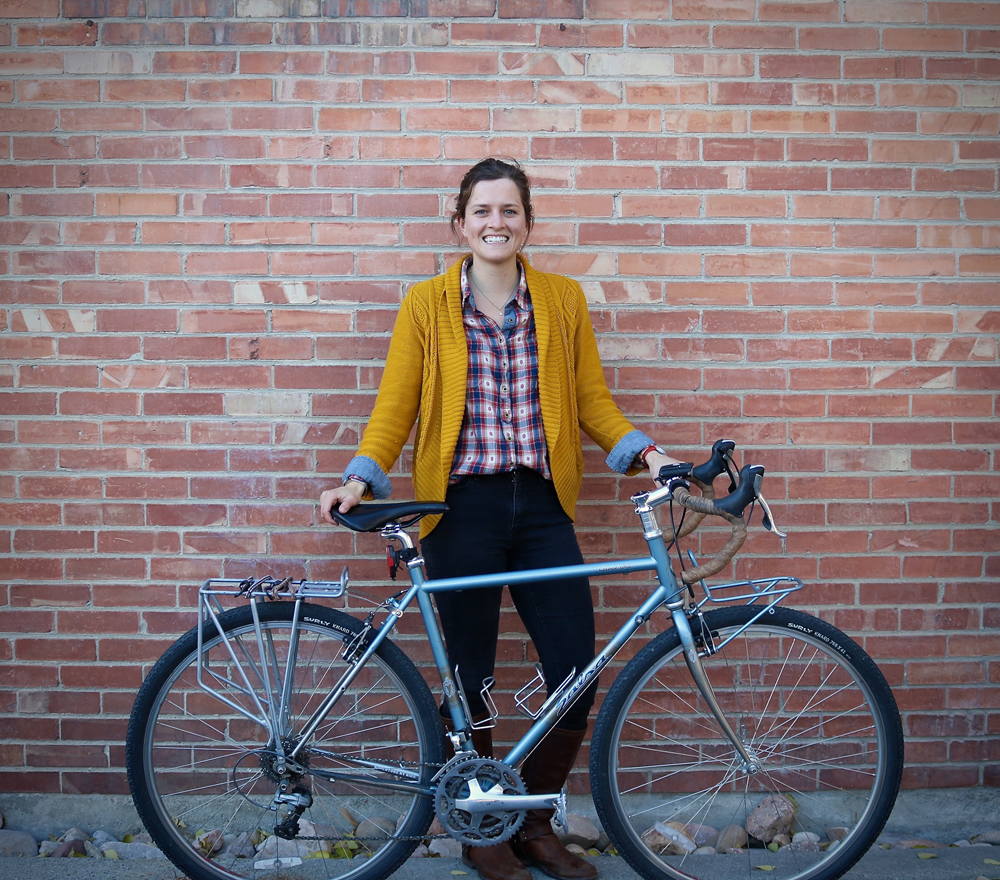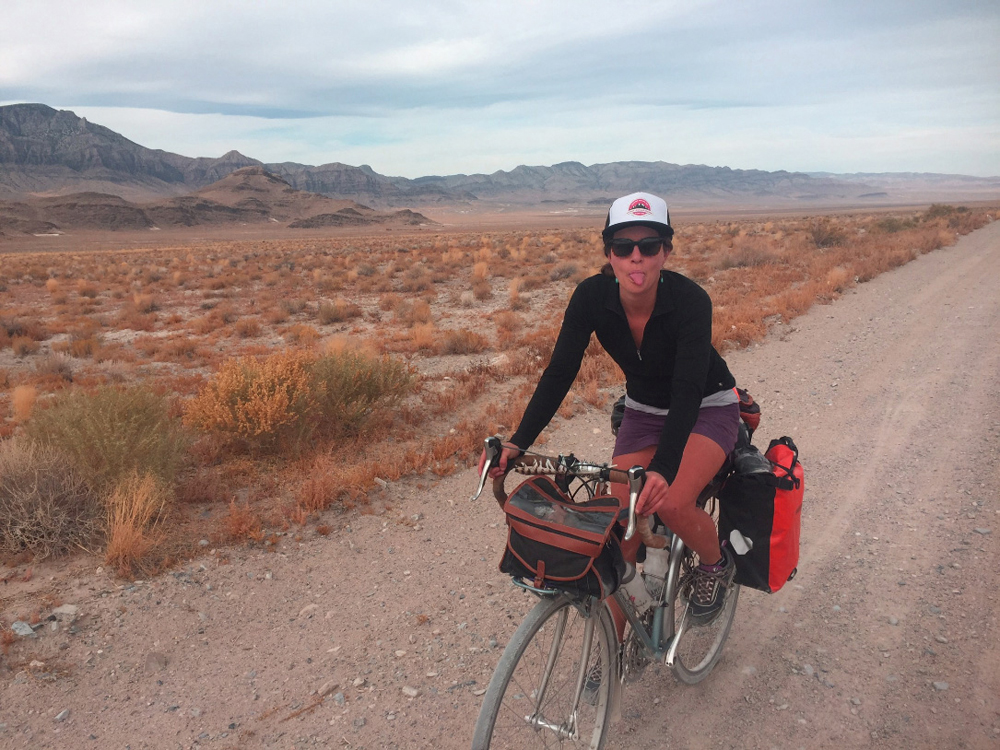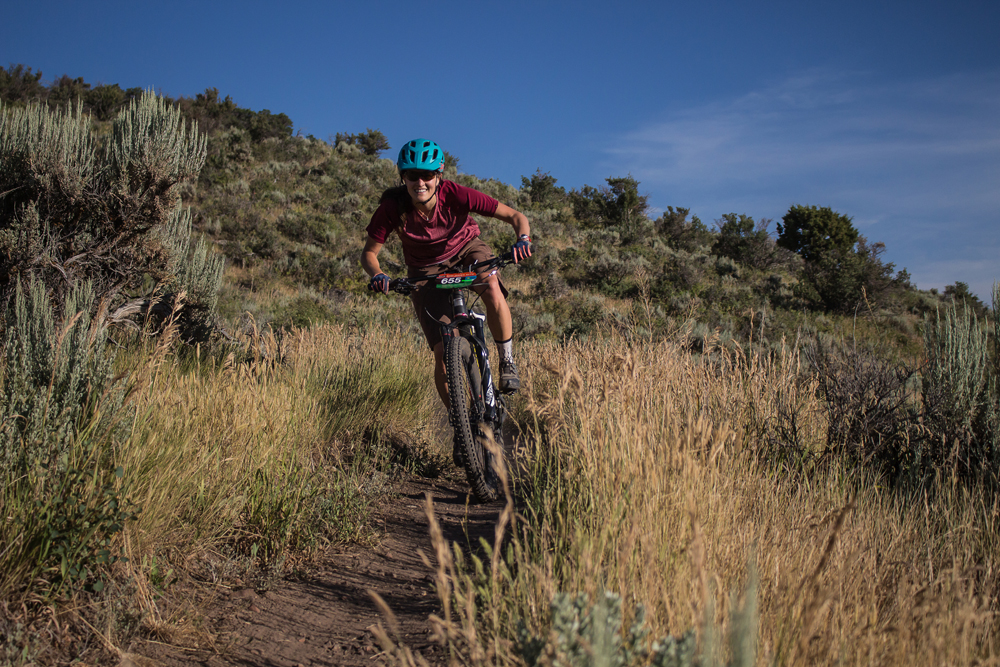
Cycling West: Stephanie, It has been 3 years since you were last featured in Cycling Utah. At that time you were with Aggie Blue Bikes on the campus of Utah State. What have you been up to since that time?
Stephanie Tomlin: I wrapped up my time as program director of Aggie Blue Bikes and defended my master thesis on active transportation planning in Cache Valley in May, 2016 and took the opportunity to travel for three and a half months throughout eastern Europe with Sam (Warrick, center manager for the SLC Bike Collective). We returned in early September and I started working at Fehr & Peers Transportation Consultants as a transportation planner shortly after, where I am still working today. At work I specialize in active transportation planning and design, which means I get to help create bike lanes, multi-use paths other facilities to make biking and walking easier and safer throughout the state and the west. It’s an ideal gig for me – it’s what I wanted to do when I got into planning.
Other than work, I spend my free time on any bike I can, skiing, canoeing, camping, throwing pottery, and tending to the Warrlin Ranch – a one-acre urban homestead Sam and I bought out in West Valley. We have two dogs, turkeys, chickens, lambs, fruit trees and a 2,500 square foot garden. It keeps us plenty busy, but in the best way possible!
C.W.: You now live in West Valley City. In my mind, there is a disconnection when associating West Valley City and bicycle commuting. Tell me that I am wrong that West Valley is bad for bike commuting.
S.T.: Haha, it’s actually funny that you bring this up because it is something I am very involved in right now. The firm I work for, Fehr & Peers, was actually hired by West Valley City to create a bike and pedestrian implementation plan, of which I am the project manager for! So I am becoming intimately familiar with the biking and walking condition both from the standpoint of a resident and from the standpoint of a transportation professional. There are definitely some improvements West Valley can make towards becoming friendlier for those on foot and on bike. I would say one of the most difficult things to work around is the large state roads that crisscross West Valley. Crossing Bangerter and Redwood or 3500 South on foot or bike, for example, is very difficult and dangerous. And with those major barriers people are a lot less likely to get out biking and walking in the first place. There are also segments of roadway without sidewalks and generally there are not too many bike lanes to speak of. However, West Valley does have some wonderful low volume neighborhood streets that are great to ride and walk through, and the city is bordered on the east side by the Jordan River Trail. There are some great things going for the city, it’s just a matter of making some key connections and implementing some important facilities that prioritize those on foot and bike.
C.W.: From the perspective of someone in the transportation industry, in your experience what is the most difficult constraint to overcome when building cycling facilities?
S.T.: I find that space acquisition is often the most difficult barrier to overcome when trying to plan for and build cycling facilities. Often cities are in a situation where they are looking to retrofit cycling facilities on an existing roadway which means they need to carve out some space from somewhere to fit that proposed facility. This can be challenging because it may require cities or jurisdictions to considered repurposing vehicular travel lanes to cycling facilities – which I know sounds completely reasonable to most of the people reading this article. However, sometimes that is a tall order for decision makers, who sometimes don’t see the benefits of utilizing space in the roadway for cycling facilities. So then maybe the next logical thought it to put the cycling facility above the curb. It makes the facility more comfortable for the cyclists anyways, while not requiring a repurpose of vehicular travel lanes. Sounds like a win-win, right? Well, it’s complicated… Above curb facilities can require the city to purchase right-of-way from private land owners, making the facility very costly to construct. So, it’s not to say that space acquisition for cycling facilities is impossible – it’s not at all – it is just a barrier that requires design consideration, and in situations where it is tight, public support can really help usher a cycling facility project along.
C.W: How do you manage to get through WVC to your work?
S.T.: My bike commute to work in Sugarhouse consists of riding through the neighborhoods of West Valley to the Green Line TRAX station, taking TRAX to Central Point, then riding up the S-Line trail the rest of the way to Sugarhouse Park. I really can’t complain. The integration with light rail in recent years has really stepped up my bike commuting game
C.W.: What are some of the differences and similarities you have noted in your commute in the Salt Lake County valley vs. Cache County?
S.T.: Bike commuting in Salt Lake involves a lot of separated multi-use pathways and separated facilities, whereas Cache Valley commuting was often on low-volume neighborhood roadways that didn’t necessarily need separated cycling facilities. It’s interesting to compare the two locations because I never felt unsafe riding in Cache Valley because of the low volume roadways, even though there sometimes weren’t bike lanes there to ride on. Here in Salt Lake the ever-growing network of comfortable and often separated cycling facilities on busier roadways obviously has it’s pros as well. I like riding in both of them for different reasons. I LOVE the ability to integrate bikes and light rail here in Salt Lake. My bike and the train are a part of my every-day commute here and it is makes transit exponentially more appealing and functional for me.
C.W.: Since the time of the previous column, I have read reports of “no growth” and in some cases declines in commuting by bicycle. A recent article in USA Today stated that in 2014, 904,000 people described themselves as bicycle commuters. The article went on to say that that in 2017 only 836,500 people that count themselves as bike commuters with a 3.2% drop from 2016 to 2017. Some cities such as San Francisco and Seattle have reported decreases in bike commuting upwards of 20%. (I don’t know the sources of the numbers in the article or the methodology of the counts, both of which could be completely wrong).
Do you think the article is accurate? Are you aware of different numbers?
S.T.: I have heard of and seen similar reports to the ones you state here. It’s somewhat disheartening considering the investment many cities and states have made in active transportation infrastructure, but I’d imagine it’s a result of a relatively strong economy and low gas prices right now. Things may change and shift back the other direction. I also see this from the perspective of the strides Utah has made and I think at the state level there is still a big emphasis towards promoting and supporting active transportation infrastructure. For example, UDOT is coming to the table to accommodate bike infrastructure in their roadways much more than they have in the past. And the governor has recently established the 1,000 miles of new trails in Utah, campaign, which will help support growth and development of cycling infrastructure throughout the state. I am optimistic that bike commuting will still be a viable option for Utah residents into the future.
(Cycling West editorial note: I have since been informed that the USA Today article is incorrect. Though the numbers of bike commuters has flattened, the numbers are much better than what USA Today has printed. Lou Melini)
C.U.: What changes have you made over the last several years with regards to clothing, bike and tire choices? What tips do you have for a trouble-free bike commute?
S.T.: Let’s see. I got a front basket for my commuter bike recently, which is nice for small miscellaneous items, although I find it kind of cumbersome on the train. I also recently got Surly Knard tires for my commuting bike that I love. They are knobby and 700X41 which make them great for anything on gravel or adventurous alleyway commuting. In terms of clothing choices, it’s interesting because I feel like I have gotten less cycling-gear specific in my commute recently. I now work in an environment where I need to be a little more presentable than I needed to be at Aggie Blue Bikes, but I still find that I often bike commute in the clothes I am going to be working in. Maybe this isn’t the greatest thing in the world, but it’s working for me right now and takes packing an extra pair of clothes for work out of the equation, which is a bonus! I think it comes down to making it work in whatever way you can and being flexible. Do I show up to work a little sweaty? Yes. But it’s manageable and I always prefer that over driving my car in…
C.W.: Overall has the environment for bike commuting improved over the past several years? What could be improved?
S.T: As I mentioned in the above question yes, I do feel like the condition for bike commuters has been improving over the past several years. It just seems to be more recognized than it has been in the past. With that said, we still have a long ways to go. But we now have so much data to help make the case for safe cycling facilities that I think it is just going to get easier to justify the improvements.
C.W.: Thanks Steph. It has been great to catch up. Keep up the good work for cyclists and see you on the S-Line trail.


If you have a suggestion for a commuter profile, especially from Idaho, Montana, Nevada, Wyoming, W. CO, and N. AZ, have a commuter question, or other comments, please send it to lou@cyclingwest.com







